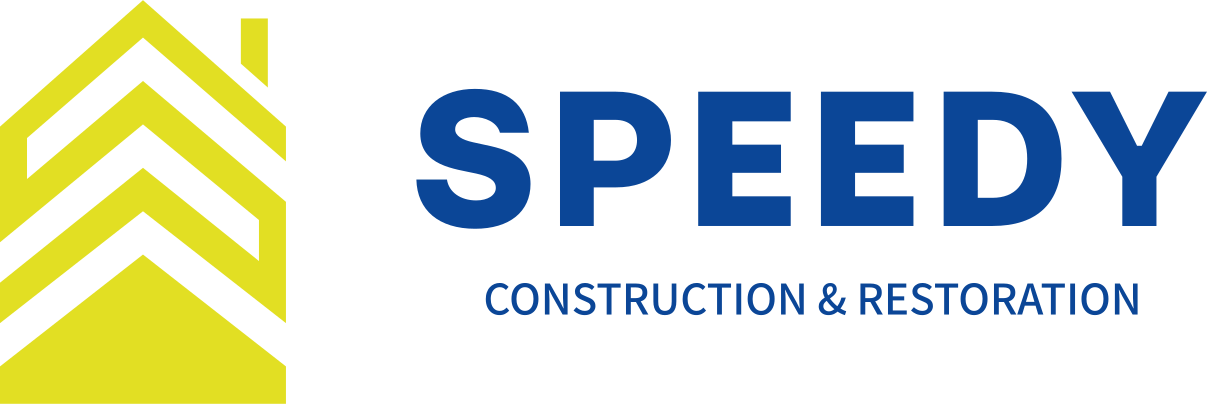Homes and buildings constructed during certain eras often contain hidden materials that pose significant health risks when they deteriorate or are disturbed. Many property owners turn to Professional Asbestos Abatement Services GTA when they suspect popcorn ceilings or textured walls might contain hazardous fibers. These textured finishes were once popular for their acoustic qualities and ability to hide imperfections. However, their composition has made them one of the highest-risk surfaces in older structures.
Popcorn ceilings and wall textures hold a unique place in construction history. They were applied in countless residential, commercial, and institutional properties. What makes them problematic now is their tendency to age, flake, and shed particles into occupied spaces. Once disturbed—even slightly—these surfaces can release airborne fibers that pose long-term, irreversible health concerns. The danger is silent and invisible, making proper assessment and removal essential.
Why Popcorn Ceilings and Wall Textures Were So Common?
Textured finishes became extremely popular due to their convenience and aesthetic appeal. Builders used them to:
- Hide imperfections in drywall
- Speed up finishing work
- Reduce labor costs
- Improve sound absorption
- Create a uniform surface across large spaces
These finishes were applied in homes, apartment complexes, office buildings, schools, healthcare facilities, and retail spaces. While the convenience made them attractive, the materials used to create the texture placed countless occupants at risk without their knowledge.
Popcorn textures, in particular, often contained a high percentage of fibrous materials. Their formula allowed for thick, rough coverage that bonded well to ceilings. Unfortunately, the durability of these materials has diminished over time, leading to increased shedding in older buildings.
The Hidden Danger Behind Decorative Surfacing
Textured surfaces may look harmless, but their composition can make them one of the most hazardous building components when disturbed. These materials were commonly mixed into:
- Spray-on acoustic ceiling textures
- Stippled or “knockdown” wall textures
- Decorative swirls and patterns
- Soundproofing layers
- Fire-resistant applications
These mixtures adhered well and created the desired visual effect. But the microscopic nature of their contents made them an invisible risk.
The danger increases when surfaces flake, crack, peel, or become brittle. A popcorn ceiling that begins to degrade releases tiny particles that float through the air, settle on floors and furniture, and circulate through ventilation systems. In buildings where maintenance has been inconsistent, the risks multiply year after year.
What Makes These Materials High-Risk Compared to Others?
While many parts of older buildings may contain dangerous materials, textured ceilings and walls pose unique challenges. Their positioning and composition make them higher-risk than other surfaces.
Key Risk Factors Include:
- Large surface area exposed directly above occupants
- Constant gravitational shedding of loose particles
- Early deterioration due to moisture or temperature shifts
- Difficulty of sealing or cleaning due to rough texture
- High probability of disturbance during renovations
- Particles easily become airborne when scraped or drilled
These textured surfaces rarely remain untouched. Any ceiling fan installation, light fixture upgrade, water leak, or minor repair can disrupt them.
Health Implications When Textures Contain Dangerous Fibers
The health risks associated with airborne fibers are well-known within industry circles. The danger lies in inhalation. Fibers are microscopic, sharp, and persistent. Once inhaled, they embed into the lungs and nearby tissues.
Conditions linked to long-term or repeated exposure include:
- Severe respiratory impairment
- Scarring of lung tissue
- Chest pain and chronic coughing
- Mesothelial cell damage
- Life-threatening diseases that progress over time
There is no safe exposure level for these fibers. Even small amounts released during home repairs, drilling, or scraping can pose risks.
How Popcorn Ceilings Age and Break Down?
Popcorn ceilings often lose structural integrity as they age. The texture becomes dry and brittle, making it prone to disintegration.
Common Causes of Deterioration:
- Moisture from roof leaks
- Poor ventilation in bathrooms and kitchens
- Temperature extremes in attics and upper floors
- Aging adhesive layers
- Repeated vibration from ceiling fans or HVAC systems
- Settling of the building structure
As deterioration progresses, small flakes fall off, creating dust that may contain hazardous particles.
Renovation Activities That Increase Exposure Risk
Modern renovations often focus on updating interiors, which commonly involves removing textured ceilings or smoothing wall surfaces. These activities can instantly elevate risk.
Actions That Disturb Textured Surfaces:
- Scraping ceilings
- Sanding walls
- Cutting into ceilings for electrical wiring
- Installing new lighting fixtures
- Replacing drywall
- Demolition of partitions
- Removing crown molding
Even small renovation tasks, such as installing curtain rods or smoke detectors, can dislodge particles.
Why DIY Removal Is Extremely Hazardous?
Many property owners attempt to remove popcorn ceilings themselves without realizing the danger. DIY removal almost always results in uncontrolled disturbance.
Risks of DIY Removal:
- Lack of proper containment
- No access to HEPA filtration systems
- Improper wet-removal techniques
- Inadequate personal protective equipment
- Cross-contamination through clothing or tools
- Spread into HVAC systems
- Improper waste handling
Once loose particles spread through fabrics, carpets, vents, and cracks, thorough cleanup becomes extremely difficult.
How Wall Textures Pose Risks Similar to Ceilings?
Wall textures might seem safer than ceilings, but they pose nearly identical hazards. Many textured walls were coated using roller-applied or brush-applied mixes that contained fibrous additives.
Hazards Associated With Textured Walls:
- Large surface coverage across multiple rooms
- Direct contact with furniture and occupants
- Frequent damage from moving furniture or cleaning
- Higher risk in hallways with heavy foot traffic
- Increased degradation in moisture-prone areas
Any time a wall is drilled into—for shelves, artwork, wiring, or appliances—the disturbance can release particles. Environmental Factors That Amplify Risk
Certain environmental conditions can worsen the release of fibers from textured surfaces.
Key Environmental Contributors:
- High humidity causes swelling and cracking
- Dry environments promote flaking and shedding
- Water leaks weaken substrate material
- Temperature fluctuations cause expansion and contraction
- Wind or drafts spread particles through vents and gaps
When any of these factors are present, monitoring and assessment become even more important.
How Occupants Are Exposed Without Realizing It?
Exposure often occurs silently. Many occupants never realize their ceiling or wall texture contains hazardous material, especially if it looks intact.
Unnoticed Exposure Sources:
- Dust falling from aging ceilings while people sleep
- Small cracks release particles during seasonal changes
- HVAC systems are pulling contaminated dust into returns
- Pets brushing against textured walls
- Vibrations loosen particles from ceiling fixtures
These exposure pathways highlight why intact materials must still be treated carefully, especially in aging buildings.
Why Testing Is the Only Way to Confirm Risk?
Visual inspection alone cannot determine whether a textured surface contains dangerous fibers. Two identical-looking ceilings may have completely different compositions.
Proper Testing Involves:
- Extracting a controlled sample
- Using accredited laboratory analysis
- Evaluating concentration levels
- Reviewing building age and materials
- Checking multiple locations
- Assessing environmental conditions
Testing removes uncertainty and provides clear direction for safe handling.
How Aging Buildings Increase the Likelihood of Hazards?
The older the structure, the higher the chance that textured applications contain harmful materials. Many buildings still contain their original ceilings and walls, meaning decades of aging have taken place.
Age-Related Risks Include:
- Weakening of adhesive properties
- Breakdowns due to roof leaks
- Layers of paint trapping dust beneath
- Structural shifting that cracks textured surfaces
- Prolonged exposure to environmental stress
As buildings continue to age, risk increases exponentially.
The Role of Ventilation Systems in Fiber Spread
Once fibers enter a ventilation system, they can travel much farther than the immediate area where the disturbance occurred.
Ventilation-Related Risk Factors:
- Return vents pull particles into ducts
- Supply vents are spreading particles to other rooms
- Weak filters that fail to capture microscopic materials
- Airflow patterns driving particles into living spaces
- Duct vibration dislodges accumulated dust
This spreading mechanism makes it critical to isolate systems during abatement.
Damage from Water Leaks and Flooding
Water dramatically increases the risk level in textured ceilings and walls. Moisture softens the material, causing it to crumble and release debris.
Common Situations That Worsen Risk:
- Roof leaks directly above textured ceilings
- Pipe failures inside walls
- Flooding from upper floors
- Condensation issues in bathrooms or kitchens
- Faulty plumbing seals
Water damage often triggers emergency removal because deterioration accelerates rapidly once moisture is introduced.
How Texture Removal Must Be Done to Control Exposure?
Removing popcorn ceilings or textured walls requires strict control measures.
Safe Removal Requirements:
- Full containment barriers
- Negative-pressure air filtration units
- Specialized wet-removal methods
- Proper worker protective gear
- Sealed waste disposal processes
- Controlled access pathways
- Decontamination chambers for workers and tools
These measures prevent exposure for occupants, workers, and nearby areas.
Why Leaving Textured Surfaces Untouched Isn’t Always Safe?
Some assume that leaving a ceiling or wall alone is safe. However, materials that appear “stable” may still release particles.
Situations Where Leaving It Alone Is Unsafe:
- Cracking or peeling texture
- Water stains or soft spots
- Visible flaking
- Vibration-prone rooms
- Areas with heavy air circulation
- Signs of adhesive breakdown
- Rooms with children or elderly occupants
Proactive evaluation often prevents future hazards.
The Impact of Home Repairs on Exposure Risk
Routine home maintenance often disturbs textured surfaces without intent.
Repairs That Often Cause Disturbance:
- Replacing electrical wiring
- Patching holes
- Fixing leaks in ceilings
- Installing security systems
- Mounting shelves or cabinets
- Repairing HVAC components
- Removing mold or mildew
Every routine repair has the potential to disrupt textured surfaces.
How Textured Surfaces Affect Property Transactions?
During property sales, popcorn ceilings and textured walls can influence inspections, negotiations, and closing processes.
Impacts on Real Estate Transactions:
- Lower buyer confidence
- Concerns about cleanup costs
- Delayed closings due to testing requirements
- Renegotiations for price adjustments
- Potential need for immediate removal
- Insurance complications for aging ceilings
Properties containing textured surfaces often require extra due diligence.
The Role of Long-Term Monitoring
Buildings with intact textured surfaces benefit from ongoing monitoring. Conditions can change quickly due to temperature, humidity, or structural shifts.
Monitoring Practices Include:
- Annual inspections
- Moisture checks
- Spot evaluations near plumbing fixtures
- Checking for new cracks or peeling
- HVAC system cleanliness reviews
- Periodic sample testing if deterioration is observed
Monitoring provides early warnings before conditions worsen.
Why Awareness Is Critical for Property Owners and Industry Workers?
Popcorn ceilings and textured walls may seem outdated, but they remain present in countless structures. Property managers, contractors, occupants, and maintenance workers must be aware of the risks.
Key Reasons Awareness Matters:
- Hidden materials pose silent hazards
- Routine upkeep can cause unintentional exposure
- Renovation plans often involve ceiling or wall disruption
- Older buildings require special precautions
- Proper removal protects property value and occupant health
Awareness leads to safer decision-making.
Conclusion
Textured ceilings and walls hold more risk than most building occupants realize. Their appearance may seem harmless, but their composition and tendency to deteriorate over time create serious hazards. Once disturbed—even slightly—they can release particles that move silently throughout a structure.
Identifying risks early, testing materials properly, and ensuring controlled removal are essential steps in keeping occupants safe. For buildings that still contain these textured finishes, proactive assessment and safe handling remain critical to long-term health and safety.

